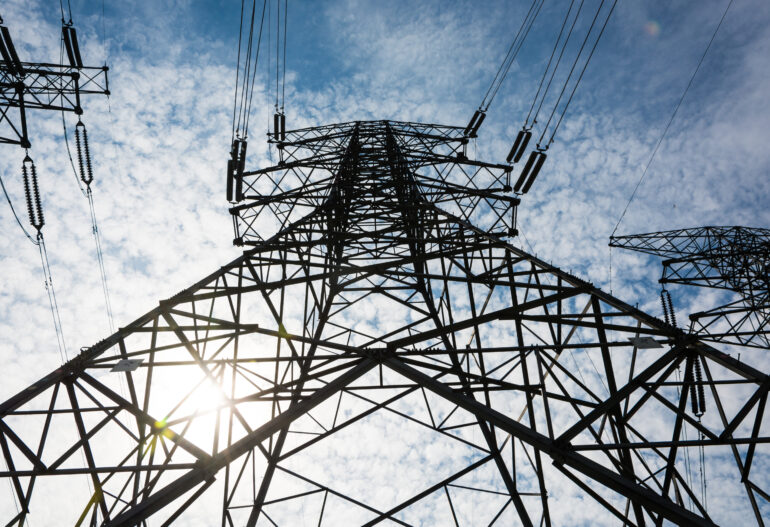Conductor fatigue and failure can result from wind-induced vibrations, including aeolian flutter and wake-induced oscillations. However, with overhead power systems, it is critical to minimise or control the transmission line vibration. Aside from trustworthy operation with reduced failures and broken conductors over time, the right Spacer Dampers & Vibration Dampers will ensure system longevity and reduced maintenance.
Let’s understand how IAC Electricals aims to support engineers and technicians in Spacer dampers and vibration dampers.
Understanding Transmission Line Vibration
The transmission lines are subjected to dynamic forces, which are caused by the wind. The presence of high frequency with low-amplitude oscillations characterises the aeolian vibration, which is a primary threat to stranded conductors. On the other hand, without a proper damper, there is a possibility of repeated vibration leading to hardware failures and strand fracture.
Vibration dampers like Stockbridge dampers reduce stress and fatigue and absorb energy. Bundled conductors are vulnerable to vibration and conductor galloping and are common in voltage lines. The spacer dampers play a dual part in maintaining a predetermined space between the attenuators and the semiconductors’ oscillatory motion.
Spacer Dampers
Spacer dampers combine damping elements with mechanical spacers. IAC Electricals presents the spacer dampers that absorb vibration energy and maintain conductor separation.
Vibration Dampers
It consists of a short dumbbell-shaped mass on a messenger cable, clamped to the conductor. It associates high-frequency aeolian vibration, prevents fatigue failures and converts kinetic energy into heat.
Key Considerations for the Right Damper
1. Spacing and Bundle Configuration
If it is about single conductors, using a standard vibration damper will be suitable. And if there are twin, triple or quad bundled conductors, spacer dampers are best to use. It maintains effective spacing and damp vibrations in the sub-conductors.
2. Vibration Frequency Range
Aeolian vibration can be resolved by using Stockbridge-type vibration dampers. On the other hand, spacer dampers are used to control both inter-conduction motion and vibration in bundle systems.
3. Mechanical Design and Material
The dampers need to be durable under different weather conditions, like UV, wind, ice, since temperature extremes are important. IAC Electricals design uses rubber-bushed or aluminium clamps for longevity and elasticity.
4. Installation Requirement
Spacer damper installation is used in anti-nodes for maximising the points of conductor deflection, which is also near the vibration sources like tower clamps. Two dampers per span are used for optimum effectiveness.
5. Testing and Regulatory Standards
IAC Electricals make sure that magnetic-power-loss and mechanical testing are performed per NABL-accredited labs, which gets verification for the performance of vibration and spacer dampers.
Best Practices for Spacer Damper Installation
It is always recommended to install the spacer damper near the anti-nodes to maximise damping. Using calibrated torque and a correct clamp helps to align the installation and avoid damage.
In case of bundled conductors, it is important to present the proper spacer dampers as per the span length and size of the conductors. Therefore, you need to check the clamps and bushings to receive effective operations.
FAQs
1. How is a space damper different from a vibration damper?
A spacer damper is a combination of damping and spacing in bundle conductors, whereas the vibration damper only absorbs the aeolian vibration in a single conductor.
2. Where are the spacer dampers required to be installed?
At the anti-nodes, there is a point of maximum deflection, which is near the insulator clamps and is required to be installed on both sides of the span for bundled lines.
3. Can the vibration damper be used on bundled conductors?
No, one should not use a vibration damper on the bundled conductors, as it needs maintenance for spacing and smoothing the coupled motion.
4. Can I use two per span for damping?
Yes, usually, two per span is effective for damping that stays longer spans.
5. Does IAC Electricals run the test for the dampers?
Yes, all the spacer dampers and vibration dampers go through mechanical and magnetic testing in NABL-accredited labs, which ensures top-class compliance and performance.
Final Thoughts
Effective line vibration control requires careful selection of Spacer Dampers & Vibration Dampers. Spacer Dampers are critical to bundled conductor systems because they provide both vibration mitigation and spacing stability. Vibration Dampers, especially the Stockbridge type, are more effective on single cables and are thus widely regarded as “traditional.”
IAC Electricals and others like them remain reliable as they provide comprehensive spacer damper installation guides alongside their tested and durable equipment.






